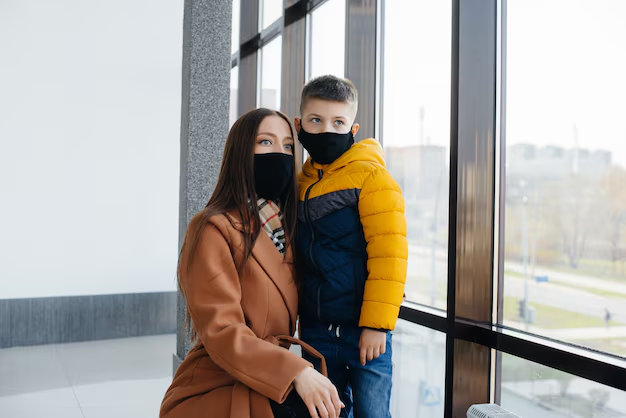Understanding Pneumonia: Is It Contagious?
Pneumonia, often termed a common illness, raises an essential question for many: Is pneumonia catchy? This inquiry isn't just about semantics—it's about understanding a potentially severe health condition and knowing how to protect yourself and others. Here, we delve into what makes pneumonia contagious, explore its causes, debunk myths, and provide practical insights to empower you with the knowledge you might need.
What is Pneumonia?
Pneumonia is an inflammation of the air sacs, known as alveoli, in one or both lungs. Often caused by infections, the air sacs may fill with fluid, leading to symptoms like cough, fever, chills, and difficulty breathing. While it can affect anyone, pneumonia poses a significant risk to young children, older adults, and people with compromised immune systems.
Causes of Pneumonia
Pneumonia can arise from various causes. Understanding these causes provides clarity on whether it is contagious:
Bacterial Pneumonia
- Streptococcus pneumoniae: The most common bacterial cause.
- Contagiousness: Yes, through respiratory droplets shared via coughing or sneezing.
Viral Pneumonia
- Influenza and RSV (Respiratory Syncytial Virus): Common viral causes.
- Contagiousness: Yes, typically spreads through droplets in the air from a cough or sneeze.
Fungal Pneumonia
- Fungi from soil or bird droppings: Causes include species like Histoplasma.
- Contagiousness: No, typically not spread from person to person; rather, through environmental exposure.
Aspiration Pneumonia
- Caused by inhaling food, drink, vomit, or saliva into the lungs.
- Contagiousness: No, this type is not contagious as it results from a physical obstruction.
Understanding Contagiousness
Deciphering whether pneumonia itself is contagious boils down to understanding the underlying cause. Pneumonia caused by infectious agents like bacteria and viruses can be spread, but it's the strain or type that determines its transmissibility.
How Pneumonia Spreads
For contagious forms:
- Person-to-person transmission: Primarily through air droplets when a person coughs, sneezes, or talks.
- Contact transmission: Touching surfaces contaminated with infectious fluids and then touching your face.
Preventive Measures:
- Wash hands frequently with soap and water.
- Use hand sanitizers when soap is unavailable.
- Avoid close contact with sick individuals.
- Use tissues or elbows to cover sneezes and coughs.
- Clean and disinfect frequently-touched objects and surfaces.
Symptoms to Watch For
Recognizing symptoms early can significantly impact recovery and prevent the spread of contagious types:
- Persistent cough
- Fever and chills
- Shortness of breath
- Chest pain during breathing or coughing
- Fatigue and muscle aches
- Confusion or lower body temperature (noteworthy in older adults)
Diagnosing Pneumonia
A proper diagnosis involves a combination of medical history, a physical exam, and diagnostic tests such as:
- Chest X-rays: To identify inflammation or fluid in the lungs.
- Blood tests: To confirm infection and identify the organism.
- Sputum test: Analyzing the fluid from the lungs.
Risk Factors for Developing Pneumonia
Awareness of risk factors can help in managing health and preventing pneumonia:
- Age: Young children and people over 65 are at higher risk.
- Smoking: Damages lung mucosa, reducing defenses.
- Immune system disorders: Such as HIV/AIDS or medications that suppress the immune system.
- Chronic diseases: Like asthma, diabetes, or heart disease.
When to Seek Medical Attention
Prompt medical evaluation is essential when pneumonia is suspected, especially if:
- Symptoms worsen or fail to improve.
- High fever persists.
- Breathing becomes increasingly difficult.
Prevention Strategies
Though pneumonia can be serious, there are several strategies to reduce the risk:
- Vaccinations: Protect against certain types like pneumococcal pneumonia and influenza.
- Healthy lifestyle: A balanced diet, regular exercise, sufficient sleep, and smoking cessation bolster immunity.
- Environmental precautions: Limit exposure to pollutants and practice good hygiene.
Summary
Understanding whether pneumonia is "catchy" helps differentiate between different causes and informs effective preventive measures. Here’s what you need to remember:
- Bacterial and Viral Pneumonia: These particular types are contagious.
- Fungal and Aspiration Pneumonia: Not contagious, stemming from environmental or physical causes.
- Symptoms: Common across all types but require medical attention for accurate diagnosis.
- Prevention: Hand hygiene, vaccines, and general health measures are vital in curbing the spread.
Key Takeaways
- 🦠 Contagious Types: Bacterial and viral pneumonia; awareness and preventive measures are crucial.
- 🧼 Prevention: Hygiene practices like frequent handwashing are effective barriers.
- 🚫 Non-Contagious Types: Fungal and aspiration pneumonia don't spread person-to-person.
- 👍 Vaccination: A proactive step towards protection against common contagious strains.
- 🚨 Alert: Seek medical advice if symptoms like persistent cough, fever, and difficulty breathing arise.
By understanding the facets of pneumonia and its contagious nature, you can protect yourself and those around you, leading to healthier communities.

Related Articles
- a Typical Pneumonia
- Can a Cold Turn Into Pneumonia
- Can a Sinus Infection Turn Into Pneumonia
- Can Amoxicillin Cure Pneumonia
- Can Amoxicillin Treat Pneumonia
- Can Baby Oil Cause Pneumonia
- Can Bronchitis Turn Into Pneumonia
- Can Covid Turn Into Pneumonia
- Can Doxycycline Treat Pneumonia
- Can Flu Turn Into Pneumonia